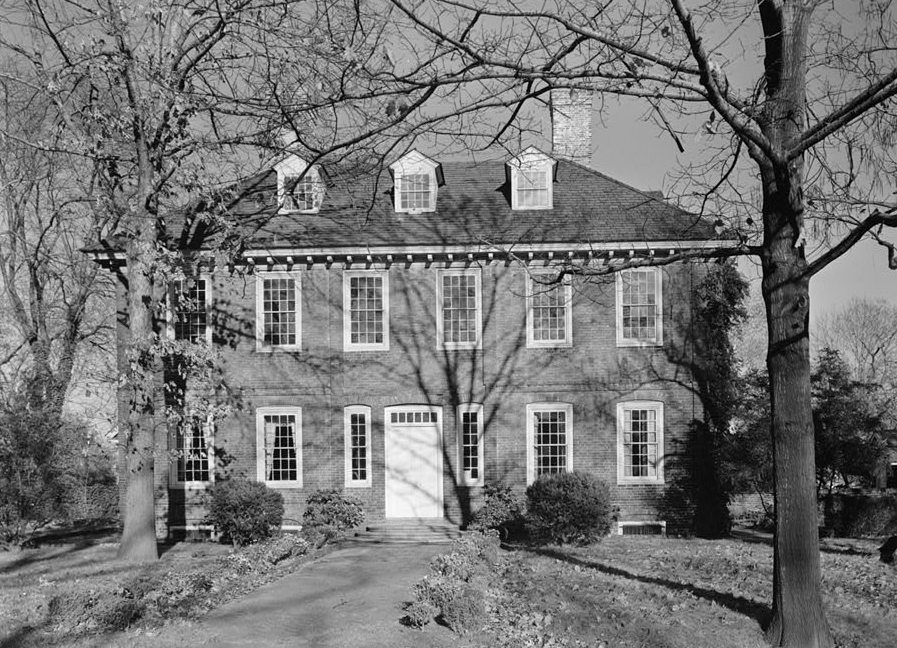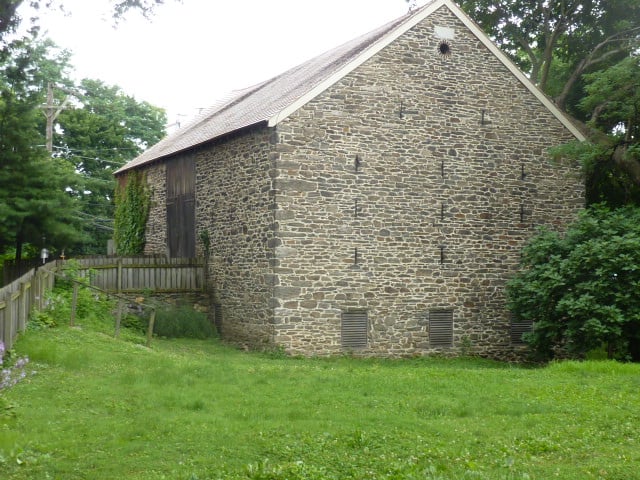
America’s first horticultural library, a major breakthrough in plant science, and the founding of an important American cultural institution—all these and more occurred in the same spot, what was once a bucolic farm in North Philadelphia. The neighborhood has changed, but I was fortunate recently to participate in a day-long tour of Philadelphia sites that played important roles in the Quaker contribution to American Horticulture–an event organized by the Region II Garden Writers Association.
Laura Keim, Stenton’s Curator, gave an inspiring and informative tour of this special place–one that has hosted an extraordinary span of American horticultural history.
Although he grew up in Ireland, James Logan was originally from a Scottish family. As a young man, Logan met William Penn, the founder of Pennsylvania, during a visit Penn made to England –and subsequently accompanied him back to Philadelphia in 1699. Logan soon became William Penn’s secretary, but he was also a merchant and scholar. It was probably due to his interest and talent with languages that he was put in charge of negotiations with Native Americans. Logan accumulated considerable personal wealth through dealings in the fur trade and from acquisition of land from native people–by the end of his life, he owned over 18,000 acres.
In the 1720’s he built Stenton—named for the Scottish village where his father was born—as a country house. Although Logan was Quaker and said he planned a “plain, cheap farmer’s stone house,” the brick Georgian style house he actually built is elegant– two rooms wide and two rooms deep– and was furnished with numerous commissioned pieces. He also assembled one of the largest libraries –3000 volumes–in the American colonies. This library was frequented by Benjamin Franklin as well as John Bartram, who learned horticultural Latin here. Logan discovered the critical role of pollen in plant reproduction through experiments conducted with corn; Linnaeus was impressed.
Two more generations of Logan descendants lived on the property before Stenton was opened to the public in 1900, making it the first Museum House in the country. In 1913, the Garden Club of America was founded here when a group of mid-Atlantic women led by a Stenton garden committee member wrote their first mission statement.
The object of this association shall be to stimulate the knowledge and love of gardening among amateurs; to share the advantages of association through conferences and correspondence in this country and abroad; to aid in the protection of native plants and birds; and to encourage civic planting.
Their 100th Anniversary celebration this year is one more reminder of the importance of this remarkable property.



